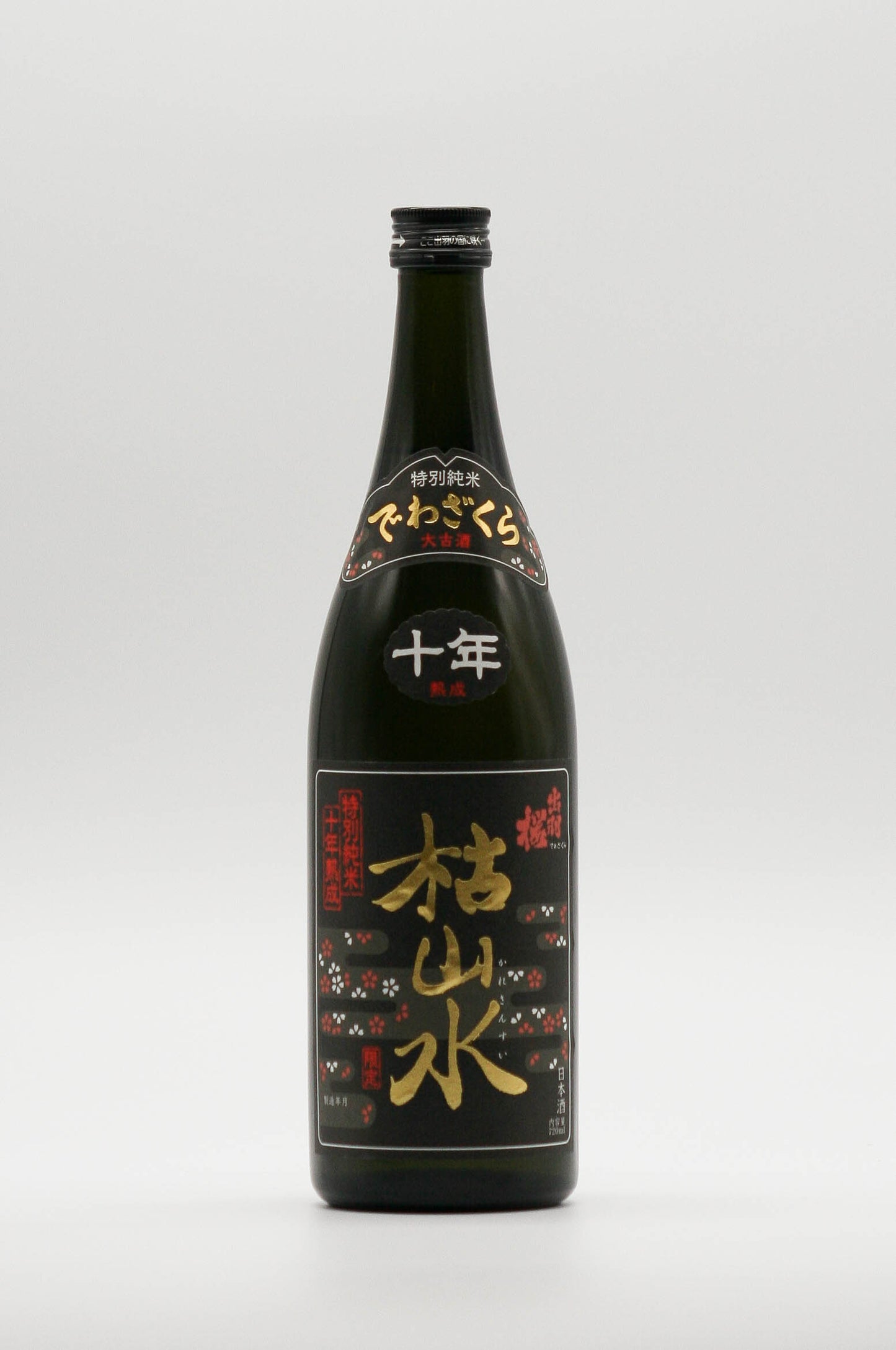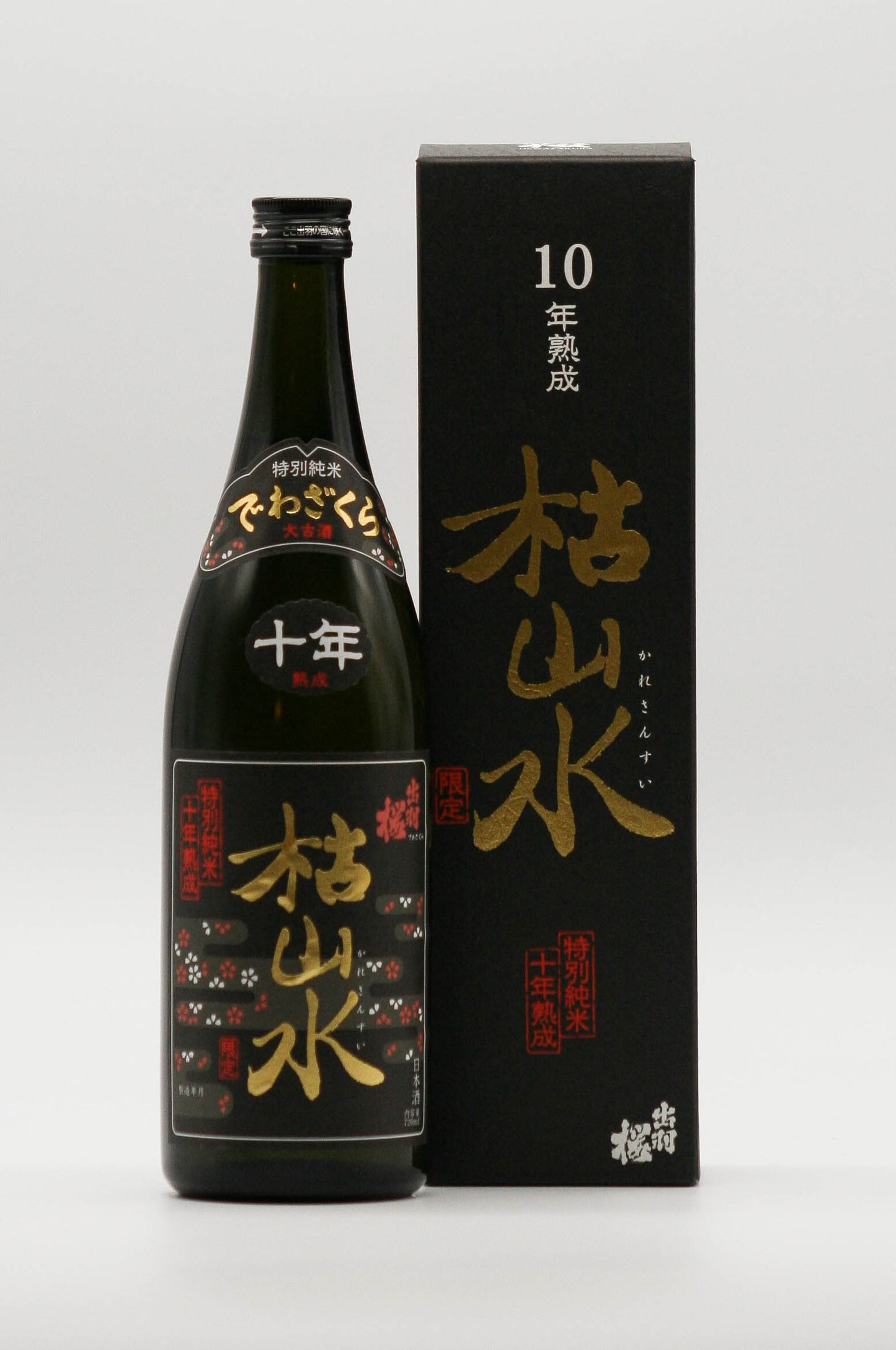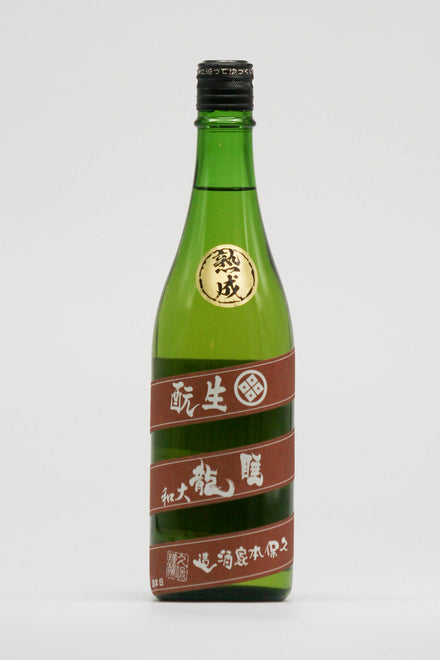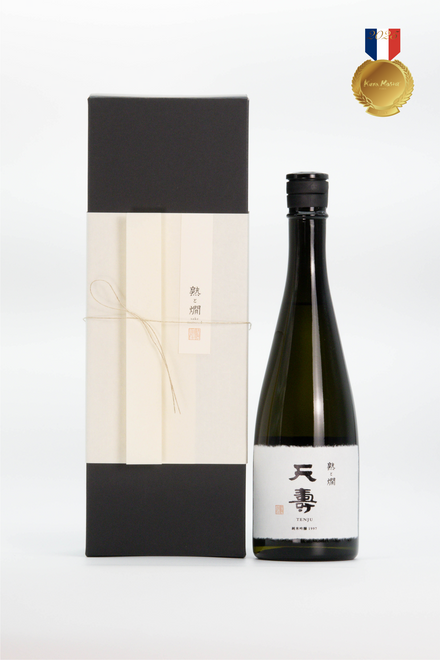


A full-bodied sake that has been matured for ten years at room temperature to bring out its color, aged aroma, flavor, and acidity. Warm to open the flavor up further.
Dewazakura Junmai Karesansui 10 Years Old
| Vintage | - |
| Years aged | 10 years |
- 10 years or more
- All Products
- Less than 5,000 yen
- Light Yellow/Green
- Non-vintage
- Throughout the meal
- Brewer:
- Alcohol:16 degrees
- Volume:720ml
Couldn't load pickup availability
[ Drinking alcohol under the age of 20 is prohibited by law. ]
A room-temperature matured entry in Dewazakura Sake Brewery's Karesansui series.
Rather than maturing in their main warehouse, they mature for ten years in their Yamagata kura, in Yamagata City. This allows the sake to evolve naturally with the seasonal temperature changes, about 0 to 25℃.
The result is a full-bodied sake with a matured aroma of nuts and caramel and a good balance of umami and acidity. It's great warm, too.
Message from the brewery: "Karesansui is another brand of long-matured sake from Dewazakura. We want the drinker to feel the sense of tranquility and contentment you feel when looking at a beautiful Japanese garden. It doesn't lose to strong flavors and pairs in a way that both sake and food enhance each other."
- about
-
Type 特別純米 Rice polishing ratio 55% Yeast type Ogawa yeast Ingredients/raw materials Rice (domestic), rice malt (domestic) Rice type Haenuki Origin of rice Yamagata Prefecture Toji(Brew Master) Yoshiyuki Inoue Assemblage 無
- Recommended occasions/temperature
-
- How to store
-
- Delivery dates and charges
-



Tasting comments
-
Nobuhiro Ueno
(Juku to Kan Bar Master / Permanent Director of the Toki Sake Association)The mild caramel-like aged aroma at the top suggests a gentle taste. It has a gentle taste which is slightly rounded. It never feels bitter, and is pleasant in the mouth. A drink to savor slowly.
-
Hidekazu Ishiwata
(Former National Tax Bureau Chief Appraiser)Pale yellow. Caramel, nuts, and spicy attack on the orthonasal aroma.
The retronasal aroma has sweet notes of maple syrup (from Sotolon), which spreads throughout the mouth.
It has an elegant sweetness and a clean, straight finish that lingers for a long time. -
Akiko Toda
(Director of ITTEKI, Japan Sake and Meat Research Institute)Beautiful yellow color. The orthonasal aroma is of burnt and roasted almonds.
Very smooth texture. The slightly strong acidity provides lightness and a crisp aftertaste.
I recommend pairing with Chinese-style steamed fish made with ginger and nuts? -
Yuji Yamauchi
(Yushima Tenjinshita Sushi Hatsu 4th generation / 1st JSA SAKE DIPLOMA competition winner)A soft fragrance.
The fragrant aroma, sweetness, and complexity of sticky rice cakes,
The lingering aroma goes well with baked dishes.
Brewer
- Choosing a selection results in a full page refresh.
- Opens in a new window.



